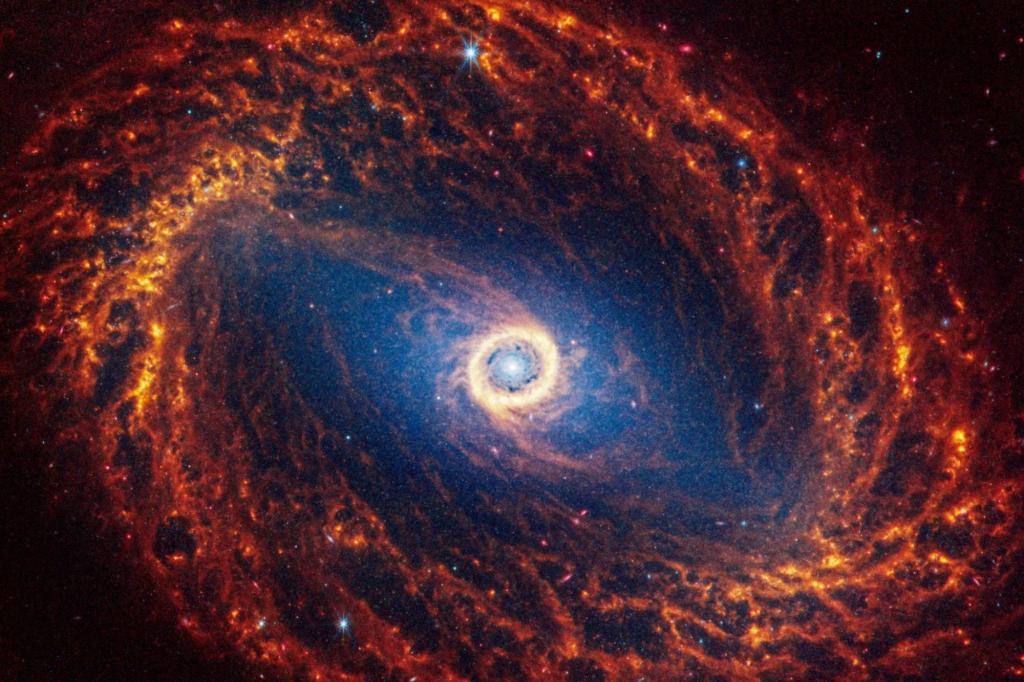These images are out of this world.
New snapshots from outer space released Monday show the “mind-blowing” detail of 19 spiral galaxies near our Milky Way that were captured by the James Webb Space Telescope thanks to the work of more than 150 astronomers around the world.
Images of spiral galaxies, similar to giant, bright pinwheels, offered a deeper guide to star formations, as well as galactic structure and evolution.
“The new Webb images are extraordinary,” Janice Lee, project scientist for strategic initiatives at the Space Telescope Science Institute in Baltimore, said in a statement. “They are mind-blowing even to researchers who have studied these same galaxies for decades.
“The bubbles and filaments are resolved to the smallest scales ever observed and tell a story about the star formation cycle.”
Images of 19 spiral galaxies captured by the James Webb Space Telescope have been published. via REUTERS All galaxies are relatively close to the Milky Way and the closest is 15 million light years from Earth. Via REUTERS
Lee and other scientists who are part of the project called PHANGS, or High Angular Resolution Physics in Nearby Galaxies, used Webb’s Near Infrared Camera (NIRCam) and Mid-Infrared Instrument (MIRI), which showed about 100,000 clusters of stars and millions or perhaps even billions of individual stars.
The closest galaxy imaged is about 15 million light years from Earth, while the farthest is about 60 million light years from Earth.
The James Webb Space Telescope, which builds on the progress of the former Hubble Space Telescope, was launched in 2021 and began collecting data the following year.
The observations come from Webb’s near-infrared camera and mid-infrared instrument. via REUTERS An image of the galaxy NGC 2835, located 35 million light years from Earth. Via REUTERS
The new images allowed researchers for the first time to sort out in high detail the structure of the clouds of dust and gas that shape stars and planets in galaxies beyond the Large Magellanic Cloud and the Small Magellanic Cloud. , a pair of galactic satellites of the Milky Way.
“The images are not only aesthetically stunning, but they also tell a story about the stellar formation and feedback cycle, which is the energy and momentum released by young stars in the space between stars,” Lee said.
The galaxy NGC 1512 is 30 million light years from Earth. Via REUTERS
“Actually, it appears that there was explosive activity and clearing of dust and gas on both cluster and kiloparsec scales (approximately 3,000 light years),” Lee added.
“The dynamic process of the overall star formation cycle becomes obvious and qualitatively accessible, even to the public, making the images compelling on many different levels.”
With post cables
Categories: Trending
Source: vtt.edu.vn
